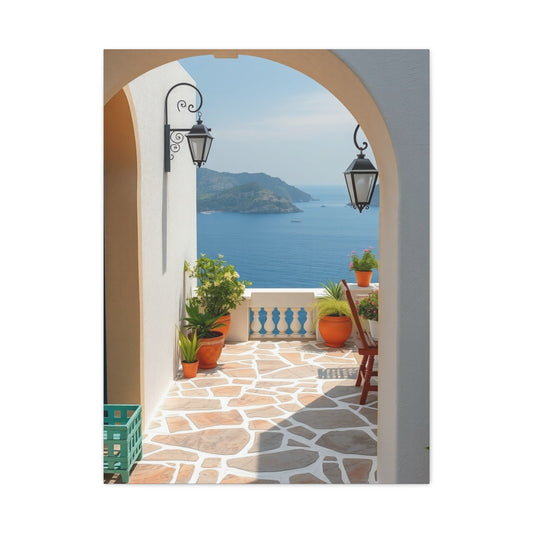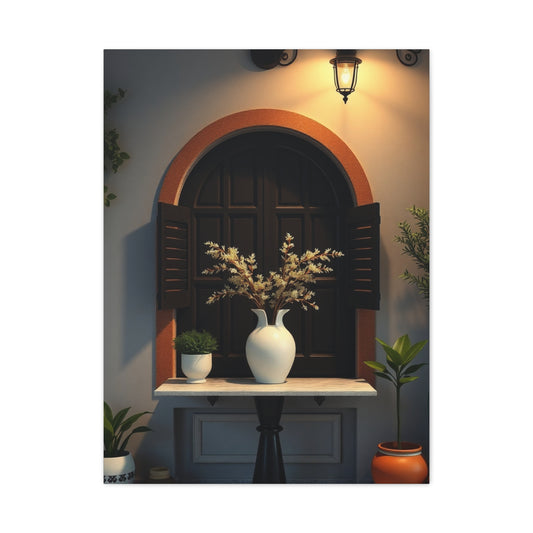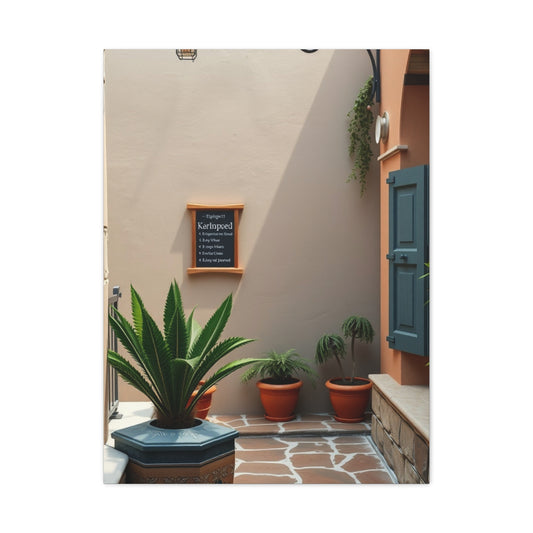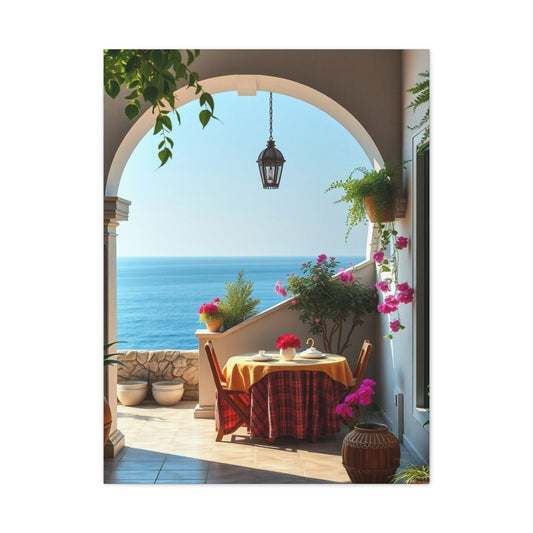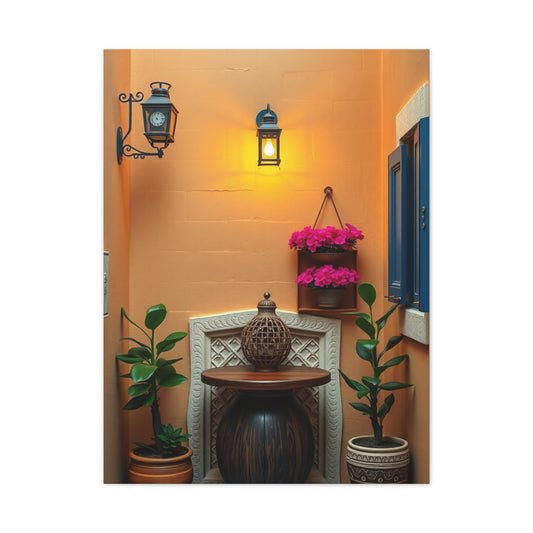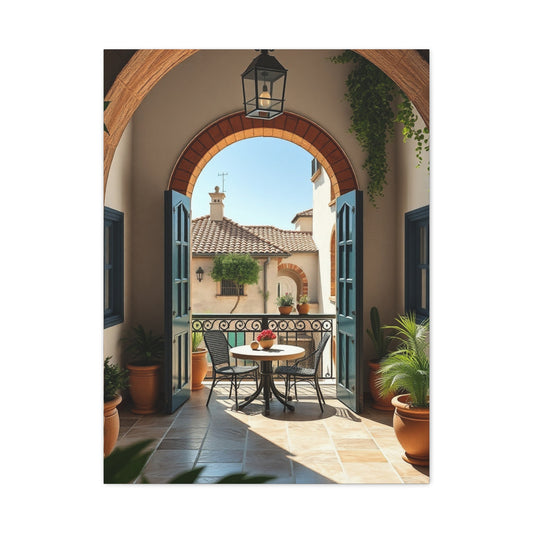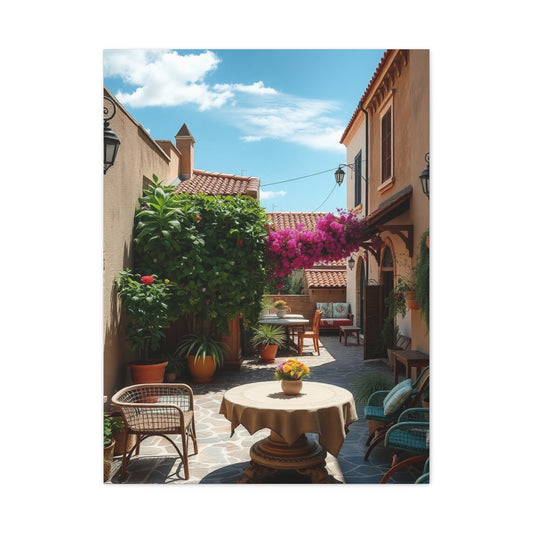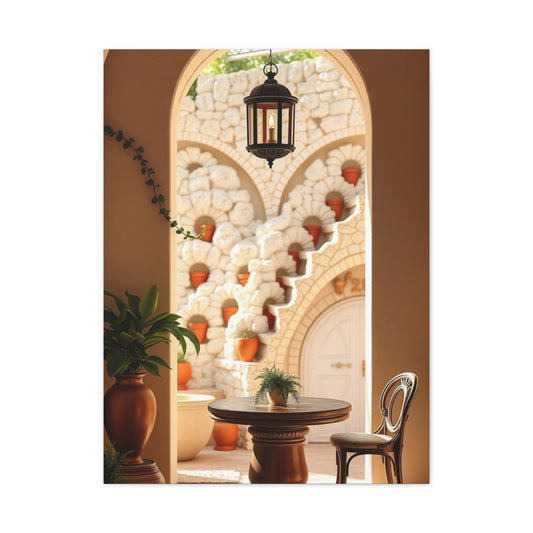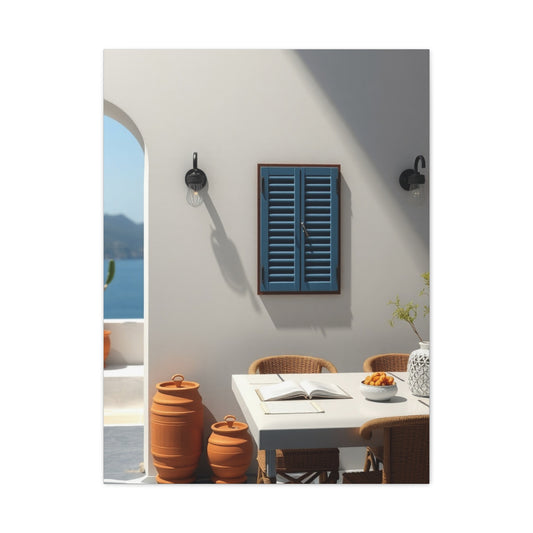Transform Your Living Room with 20 Gorgeous Mediterranean Wall Art Concepts
Infusing Mediterranean character into your living room through wall art is like inviting the charm of coastal villages, ancient ruins, and vibrant seaside landscapes directly into your personal sanctuary. The Mediterranean style, which blends influences from Southern Europe, North Africa, and the Eastern shores, thrives on warmth, texture, and an effortless marriage of natural beauty with artistic traditions. When woven thoughtfully into a home, this kind of art creates a sense of escape, as though every wall whispers stories of sun-drenched afternoons, salt-kissed breezes, and timeless architecture.
The living room is the heart of the home, where guests gather, conversations flourish, and families relax together. It deserves design elements that not only complement comfort but also ignite inspiration. Wall art in the Mediterranean tradition captures this duality — it adds elegance without formality and depth without excess. From old-world travel posters that celebrate glamorous coastal cities to botanical prints that celebrate the flora of the region, there are countless ways to dress your walls with character and soul.
Unlike fleeting design trends, Mediterranean wall art possesses a timelessness rooted in history and culture. Its diversity means it can lean rustic, refined, modern, or bohemian, depending on how you arrange it. By combining travel-inspired elements, nautical touches, organic textures, and earthy palettes, a living room evolves into a vibrant retreat reminiscent of holidays on the Italian Riviera, the Greek Isles, or the Andalusian coast.
In the sections ahead, we will explore how Mediterranean wall art developed, what core concepts define it, and how each category of artwork can breathe warmth into your space. Through this journey, the living room becomes not only decorated but transformed into a storybook of culture, tradition, and inspiration.
Historical Background
Mediterranean wall art carries with it centuries of cultural evolution, blending diverse civilizations into a shared visual heritage. From the mosaics of ancient Rome to the geometric tiles of Morocco, the artistry of the region reflects both local traditions and exchanges across seas and borders. This diversity makes Mediterranean design a fascinating tapestry of styles.
In classical antiquity, frescoes and mosaics dominated the walls of villas and public spaces. Romans decorated with intricate patterns and mythological themes, while Greek artisans often celebrated nature and geometry. These motifs still inspire modern art pieces, especially in murals and mosaic wall designs. As Christianity spread, Byzantine influence introduced gilded icons and intricate religious imagery that carried rich symbolism into homes and churches.
The medieval era saw an intermingling of Islamic artistry in Southern Spain and North Africa. Calligraphic designs, arabesques, and glazed ceramic tiles added refinement and complexity. Many of these elements survive today in ceramic plate displays and tile murals that adorn Mediterranean homes.
By the Renaissance and Baroque periods, wall art leaned heavily on realism, landscapes, and portraiture, capturing everyday life along coastlines and within sunlit villages. Travel posters, which became popular in the late nineteenth and early twentieth centuries, carried forward this love of landscape but reframed it for a modern audience, celebrating destinations like Amalfi, Santorini, or Marseille.
Today, Mediterranean wall art is less about strict historical adherence and more about fusing the essence of this heritage with contemporary styles. It allows the homeowner to borrow from ancient motifs, rustic craftsmanship, and modern abstraction, creating walls that breathe both nostalgia and modernity.
Core Concepts and Foundations
At the heart of Mediterranean wall art lies a philosophy of blending nature, culture, and simplicity. This design tradition thrives on a few foundational ideas that unify otherwise diverse artistic expressions:
-
Connection to the Sea: Almost every Mediterranean country shares a deep relationship with water. Wall art often reflects this bond with imagery of boats, harbors, lighthouses, and coastal horizons. Whether in watercolor prints or abstract designs, the sea symbolizes tranquility, freedom, and timeless beauty.
-
Emphasis on Earthy Materials: Stone, clay, wood, and metal have historically been abundant in Mediterranean regions. Incorporating these into wall art through frames, sculptural elements, or textured canvases maintains authenticity while enriching interiors with tactile depth.
-
Vibrant yet Natural Colors: Mediterranean design celebrates a palette rooted in nature — azure blues of the sea, warm ochres of sun-baked earth, terracotta reds, olive greens, and sandy neutrals. Abstract art often draws upon these tones, while mosaics and tapestries layer them into vibrant compositions.
-
Cultural Storytelling: Every piece of art tells a story, whether through depictions of landscapes, symbolic motifs, or even personalized signs that reflect family heritage. These elements transform a decorative piece into a narrative thread woven through the room.
-
Balance of Rustic and Refined: Mediterranean art is never overly polished. Even when elegant, it embraces imperfection, as seen in hand-painted ceramics or textured canvases. This balance ensures walls look lived-in, welcoming, and full of character rather than sterile.
Together, these concepts ensure Mediterranean wall art serves more than aesthetic purposes. It embodies a lifestyle — relaxed, nature-inspired, culturally rooted, and endlessly versatile.
Types and Categories
Vintage Travel Posters of Mediterranean Cities
One of the most charming ways to channel Mediterranean nostalgia is through vintage travel posters. These prints, created to attract tourists during the golden age of railways and ocean liners, are now celebrated as art in their own right. Featuring sweeping coastlines, iconic landmarks, and cheerful colors, they instantly transport viewers to glamorous destinations.
In a living room, a curated gallery wall of these posters can become a narrative journey across the Mediterranean. A poster of Capri’s cliffs beside a print of Barcelona’s beaches creates a visual dialogue of culture and scenery. Their retro typography and vivid illustrations not only add energy but also evoke the sense of discovery associated with travel.
Pairing these posters with simple wooden or metallic frames maintains their vintage appeal. For a cohesive look, mix them with subtle nautical accessories like seashells or rope accents. The result is a room that feels at once worldly and intimate, like a scrapbook of cherished voyages.
Watercolor Prints of Coastal Views
For those who prefer gentler tones, watercolor art captures the serenity of Mediterranean life with fluid brushstrokes and soft palettes. Scenes of harbors, whitewashed houses, and fishing boats painted in watercolor seem to shimmer with sunlight, as though infused with salt air.
Arranging several small prints together allows each to contribute to a larger story — perhaps one depicts a fishing boat at dawn, another a hillside village at noon, and another a sunset over calm waters. Together, they map the rhythms of Mediterranean days.
Watercolor art pairs beautifully with light interiors. White walls, wicker furniture, and natural fabrics enhance the breezy quality of these artworks. For added texture, display them in distressed wooden frames, subtly echoing the rustic charm of old cottages.
Bohemian Tapestries with Nautical Themes
Large textile pieces add drama and warmth to living rooms, and nautical-inspired bohemian tapestries are particularly well-suited to a Mediterranean theme. These often feature motifs of sailboats, lighthouses, or stylized waves rendered in earthy and oceanic colors.
Hung behind a sofa, a tapestry becomes a natural focal point. Its soft fabric adds texture to the wall while also softening the acoustics of the room. Unlike paintings, tapestries bring a sense of movement and tactile charm, reminiscent of sails fluttering in the wind.
To heighten the effect, combine the tapestry with layered textiles throughout the room — throw pillows, woven rugs, or linen curtains. Together, they create a laid-back yet sophisticated Mediterranean aesthetic that feels at once casual and curated.
Ceramic Plate Wall Displays
Ceramic artistry is deeply ingrained in Mediterranean tradition, particularly in regions like Spain, Italy, and Morocco. Displaying decorative ceramic plates on walls not only celebrates this heritage but also introduces color, geometry, and artisanal craftsmanship into the home.
Each plate can showcase a unique motif, from intricate floral patterns to abstract geometric designs. Arranged in clusters, they create a dynamic composition where no two elements are alike. The effect is playful yet refined, capturing the spirit of marketplaces and artisan workshops scattered along the coasts.
To install such a display, start with one striking plate as a centerpiece and build outward with smaller supporting pieces. The result resembles a living mosaic, vibrant and eclectic. Pair the display with simple furniture, allowing the art to shine without competition.
Textured Canvas Art with Earthy Tones
For a subtler yet equally powerful option, textured canvas art offers warmth through its tactile surfaces and grounded palettes. Whether portraying abstract landscapes or rustic village scenes, the combination of texture and earthy tones like ochre, sienna, and olive green creates depth that flat surfaces cannot achieve.
Placed above a neutral sofa, textured canvases become instant conversation pieces. Their irregular surfaces invite touch and curiosity, while their colors echo the tones of terracotta roofs and sunlit vineyards.
To reinforce authenticity, pair textured art with natural materials such as stone vases or wooden coffee tables. This creates harmony between the artwork and its surrounding environment, unifying the entire living room under one aesthetic vision.
Rustic Wooden Frames for Photos
Photography is another way to capture Mediterranean beauty, particularly when displayed in rustic wooden frames. These frames, often crafted from reclaimed wood, emphasize imperfection and texture. They mirror the weathered shutters and beams common in traditional Mediterranean architecture.
A gallery wall of photographs — perhaps of olive groves, seaside cliffs, or family vacations — framed in such wood adds warmth and personalization. The rustic finish ensures the display feels relaxed rather than formal, perfect for living rooms that embrace hospitality and comfort.
Mixing frame sizes adds visual interest, while varying wood tones ensures richness. This approach not only elevates simple photographs into cherished wall art but also creates an ongoing dialogue between personal memories and broader cultural inspirations.
Metal Wall Sculptures Inspired by Nature
For homeowners seeking a more sculptural element, metal wall art is an elegant solution. Designs inspired by leaves, branches, or flowers bring nature indoors while adding texture and shine. Their metallic surfaces reflect light differently throughout the day, creating a dynamic interplay that paintings cannot replicate.
In Mediterranean decor, such sculptures often take the form of olive branches, grapevines, or floral motifs. They echo the importance of agriculture and natural abundance in the region. Placed above a sofa or fireplace, these sculptures become both artwork and ornament, striking yet unobtrusive.
To harmonize the look, complement the sculpture with other metallic accents such as lanterns, picture frames, or candle holders. Together, they enhance the organic-meets-elegant ethos central to Mediterranean interiors.
Techniques and Methods
When it comes to incorporating Mediterranean wall art into a living room, the process is not just about choosing pieces but also about applying thoughtful techniques and methods that ensure harmony between artwork and space. The Mediterranean aesthetic thrives on a fusion of balance, natural beauty, and storytelling, which makes the process as much about placement and combination as about the art itself.
One effective technique is layering. This involves combining different forms of wall art, such as pairing a large canvas depicting coastal landscapes with smaller framed botanical prints around it. The layering effect not only introduces visual interest but also echoes the sense of abundance found in Mediterranean marketplaces and village streets, where variety is celebrated rather than suppressed.
Another widely used method is thematic clustering. Rather than spreading artworks randomly, clustering them around a unifying theme — perhaps vintage posters from coastal cities, or mosaics in marine colors — builds a narrative. This approach gives the wall a sense of purpose and transforms it into a visual journey, much like strolling through a seaside promenade where each corner tells a story.
Symmetry versus asymmetry is also an important consideration. Mediterranean wall art often works beautifully with asymmetrical arrangements, where plates, photographs, or sculptural pieces are grouped in seemingly spontaneous yet balanced layouts. This reflects the natural imperfection of old stone walls, uneven cobbled streets, and hand-crafted details that define the region. However, symmetrical arrangements, especially with travel posters or framed photography, can create a more refined and gallery-like atmosphere. Choosing between the two approaches depends on whether the homeowner prefers rustic spontaneity or cultivated elegance.
Color integration is another essential method. The palette of Mediterranean art draws upon deep blues, terracotta, olive green, sandy beige, and sunlit yellows. When selecting wall art, integrating these tones with surrounding decor enhances cohesion. For example, a large-scale landscape photograph in azure and white pairs effortlessly with linens in soft neutral tones, echoing the feeling of a Greek island terrace.
Finally, scale and proportion are critical. A common method is to anchor a space with a statement piece, such as a mosaic mural or oversized canvas, and then complement it with smaller accents around the room. This ensures that the eye has a focal point but can also wander to discover subtler details. Mediterranean decor thrives on discovery, where the more you look, the more layers of artistry you notice.
Challenges and Common Mistakes
While the allure of Mediterranean wall art is undeniable, homeowners often face challenges in executing the look effectively. One frequent mistake is overcrowding. The Mediterranean style celebrates richness but does not thrive on clutter. Filling every inch of wall space with art can overwhelm the senses and diminish the impact of individual pieces. Instead, allowing breathing room around each artwork gives it space to resonate, much like a painting hanging on the textured walls of a historic villa.
Another common pitfall is neglecting harmony between art and furniture. A coastal watercolor may lose its charm if placed above a sofa upholstered in overly bold patterns that clash with its tones. Similarly, ceramic plate displays may feel disconnected if not complemented by nearby natural materials such as wood or clay. The challenge lies in creating cohesion, where walls, furnishings, and accessories speak the same visual language.
Inconsistency in framing is another issue. Mediterranean wall art often looks best when frames reflect natural textures or aged finishes, such as rustic wood, wrought iron, or simple whitewashed borders. Mixing too many disparate framing styles can create visual chaos. Choosing frames that align with the Mediterranean ethos ensures a more seamless aesthetic.
A subtler but equally common mistake is failing to consider light. Mediterranean regions are celebrated for their abundant natural sunlight, and wall art is meant to reflect and amplify that brightness. Hanging dark or overly glossy pieces in poorly lit areas can make a living room feel gloomy rather than inviting. Positioning art near windows, or complementing it with soft artificial lighting, helps maintain the radiant quality that defines the style.
Another challenge is misunderstanding cultural motifs. For instance, using geometric designs inspired by Moroccan tiles alongside imagery of Italian vineyards can sometimes feel forced if not thoughtfully combined. The Mediterranean aesthetic is diverse, but blending motifs without sensitivity risks creating a disjointed theme. Respecting the origins of each element while finding ways to weave them together into a coherent story is key to avoiding superficiality.
Lastly, overlooking scale is a recurring issue. Small prints scattered across a large wall may feel underwhelming, while oversized canvases in cramped rooms can dominate uncomfortably. Striking the right balance between artwork size and wall dimensions is essential for a harmonious composition.
Trends and Future Outlook
Mediterranean wall art has evolved over centuries, but recent years have introduced fresh interpretations that continue to shape its future. A noticeable trend is the rise of sustainable artistry. More homeowners and designers are gravitating toward artworks made from reclaimed wood, recycled ceramics, and eco-friendly paints. This shift not only reflects environmental consciousness but also aligns perfectly with the Mediterranean ethos of natural simplicity and respect for resources.
Another growing trend is the fusion of minimalism with Mediterranean aesthetics. While traditional Mediterranean walls often overflowed with detail, contemporary spaces sometimes embrace restraint. A single oversized photograph of a coastal cliff, framed by clean white walls, can convey as much ambiance as a cluster of smaller pieces. This minimalist approach resonates with modern lifestyles while still preserving the region’s spirit.
Digital reinterpretations are also gaining momentum. Artists now create digital mosaics, abstract photography enhanced with software, and virtual renderings of traditional motifs. These digital pieces can be printed on canvas or even projected as dynamic wall displays, offering a contemporary twist on timeless themes.
Color trends are shifting as well. While the classic palette of blue, terracotta, and olive remains dominant, softer variations like dusty pinks, muted lavenders, and pale aquas are emerging as fresh companions. These shades add subtlety without losing connection to the Mediterranean landscape.
There is also a resurgence in botanical and ecological themes. With global interest in sustainability and nature, wall art featuring herbs, wildflowers, and agricultural scenes has become popular. Hanging planters integrated into wall displays represent a future where living greenery blends seamlessly with traditional artworks.
Looking forward, the future of Mediterranean wall art will likely balance tradition with innovation. While handcrafted ceramics and rustic textures will never fade, technological advancements and shifting lifestyle values will introduce new expressions. The fusion of tactile authenticity with modern innovation ensures that Mediterranean-inspired walls remain relevant for generations to come.
Expert Insights
Designers and art curators often emphasize that the success of Mediterranean wall art lies in capturing its soul rather than simply copying its surface aesthetics. According to interior stylists, the Mediterranean ethos is about evoking warmth, hospitality, and timeless charm rather than adhering to rigid rules. Walls should feel as if they belong to a home that has been loved and lived in for decades.
Experts highlight that homeowners should focus on authenticity. Purchasing mass-produced prints without context can dilute the atmosphere. Instead, sourcing pieces from local artisans, flea markets, or even personal travel photographs brings genuine character. Authenticity does not necessarily mean expense; it means choosing pieces that carry stories.
Architectural historians point out that Mediterranean interiors often blur boundaries between indoors and outdoors. This principle can be applied by using wall art that reflects nature, whether through images of olive groves, seaside cliffs, or depictions of flora and fauna. In some cases, wall-mounted planters or sculptural pieces made of driftwood offer a direct extension of this tradition.
Art consultants advise considering longevity over novelty. While trendy designs may catch the eye, the most impactful wall art is timeless. Pieces inspired by centuries-old crafts such as mosaics or hand-painted ceramics have an enduring appeal that outlasts fleeting fashions. Experts recommend blending these enduring pieces with a few contemporary accents to create a dynamic but stable aesthetic.
Cultural anthropologists also remind us that Mediterranean art is inherently diverse, reflecting exchanges across borders. They encourage homeowners to embrace this hybridity rather than narrowing the style to one nation. Combining Spanish ceramics, Greek photography, and Moroccan geometric patterns, when done thoughtfully, reflects the true spirit of the Mediterranean basin as a crossroads of civilizations.
Finally, professional decorators emphasize experimentation. While guidelines exist, wall art should reflect personality as much as tradition. A family name sign in rustic script, a macramé piece with maritime motifs, or a vibrant abstract inspired by Mediterranean colors can coexist if unified by tone or theme. Experts consistently note that the Mediterranean look is less about perfection and more about resonance — the feeling of warmth, connection, and heritage that walls convey when adorned with the right art.
Personalizing Mediterranean Wall Art
Every living room tells a story, and when Mediterranean aesthetics become the narrative, individuality shapes how the tale unfolds. Personalizing wall art ensures the space reflects not just a regional style but the soul of its inhabitants. Some choose to highlight personal travels by framing sketches from coastal towns or photographs of olive groves encountered abroad. Others prefer commissioned artworks that reinterpret classic Mediterranean motifs with modern twists, turning personal vision into tangible expression.
Personalization also emerges through scale. While some homeowners favor expansive murals stretching across entire walls, others lean toward delicate clusters of small canvases. A minimalist arrangement of hand-painted ceramic plates in carefully curated colors can feel just as powerful as a sweeping landscape. The secret lies not in replication but in resonance—choosing art that echoes lived experiences and aspirations.
Textures are another medium of personalization. Handwoven textiles from regional artisans, rustic wooden frames carved by local craftspeople, or clay reliefs can infuse authenticity. These tactile elements allow a living room not merely to display art but to embody the Mediterranean lifestyle in its surfaces and sensations.
Creating Harmony with Interiors
Mediterranean wall art thrives when it harmonizes with surrounding interiors. It should never feel like an afterthought, but instead an extension of the architectural language of the room. When walls carry artworks infused with azure tones, complemented by furniture in natural woods or linen upholstery, it reinforces the effect. Similarly, terracotta-colored canvases resonate beautifully with earthy flooring and ceramic accents.
Harmony also relies on proportion. Large-scale works need breathing space, while smaller pieces often flourish in clusters. Arrangements aligned with doorways, windows, or arches accentuate architectural rhythms, evoking the cadence of Mediterranean courtyards and coastal streets.
Lighting remains another crucial component. Warm, diffused illumination enhances the organic qualities of Mediterranean colors and textures. Positioning artworks near sources of natural sunlight or layering them with ambient lamps ensures walls shift dynamically throughout the day, recalling the play of light across stucco exteriors and seaside cliffs.
Emotional Resonance of Mediterranean Wall Art
Art serves not merely as decoration but as an emotional catalyst. Mediterranean themes carry an inherent serenity born of coastal breezes, vineyard landscapes, and timeless traditions. When displayed in a living room, these artworks instill tranquility and invite relaxation. Guests entering such spaces often remark on a sense of warmth and welcome, for the Mediterranean ethos is rooted in hospitality.
Beyond calm, the imagery also evokes nostalgia. A painting of a rustic villa might remind one of ancestral roots or past travels, while abstract renderings of waves awaken a yearning for seaside adventures. These emotional layers enrich the living room, making it not only a physical gathering place but also a repository of memory and sentiment.
Mediterranean wall art also sparks dialogue. The interplay of colors, textures, and motifs invites conversation about cultural heritage, artistic processes, and personal experiences. It transforms passive walls into active participants in the life of a household.
Mediterranean Wall Art as a Lifestyle Statement
Choosing Mediterranean wall art is more than a decorative decision; it is a lifestyle affirmation. It signals appreciation for nature, history, and simplicity combined with elegance. Homes that embrace such art often radiate an ethos of leisure balanced with refinement. They celebrate meals shared with loved ones, evenings illuminated by soft candlelight, and mornings touched by sunlight filtering through linen curtains.
Wall art becomes a visual manifesto of these values. Whether it is a tapestry echoing centuries of craftsmanship or a modern canvas evoking seascapes, each piece communicates an alignment with Mediterranean ideals of harmony, balance, and beauty. This lifestyle statement carries into daily living, encouraging slower rhythms, deeper appreciation of surroundings, and greater connection to tradition.
Contemporary Reinterpretations
While grounded in heritage, Mediterranean wall art continues to evolve within contemporary interiors. Modern reinterpretations blend abstract techniques, minimalist sensibilities, and digital innovations. A living room may feature a stark canvas with broad azure brushstrokes, distilling the essence of sea and sky into pure form. Another might include multimedia works combining projection, soundscapes, and shifting hues.
Contemporary interpretations also merge Mediterranean foundations with other design languages. A minimalist Scandinavian setting might host a bold ceramic wall sculpture, its earth tones offering warmth within a cool palette. Urban lofts may showcase Mediterranean murals executed in graffiti style, bridging old-world themes with modern street culture.
These reinterpretations demonstrate that Mediterranean art is not frozen in time but capable of adapting to new contexts while preserving its soul.
Challenges of Curation
Curating Mediterranean wall art for a living room comes with challenges that require sensitivity and discernment. One common difficulty lies in overabundance. With so many motifs and materials available, it is easy to overwhelm walls and lose cohesion. The key lies in restraint—selecting pieces that converse rather than compete.
Another challenge arises in authenticity. Mass-produced reproductions risk diluting the richness of Mediterranean tradition. Seeking works crafted by artisans or limited-edition prints ensures the integrity of the aesthetic.
Scale also presents obstacles. Placing diminutive pieces on expansive walls can render them insignificant, while oversized works in confined spaces may dominate excessively. Careful measurement and thoughtful placement safeguard against imbalance.
Finally, maintaining consistency with broader interiors can prove complex. Mediterranean wall art must harmonize with flooring, furniture, and architecture. Without this alignment, the room risks feeling disjointed rather than cohesive.
Future Outlook of Mediterranean Wall Art
The future of Mediterranean wall art appears vibrant, shaped by technological advancements and evolving cultural sensibilities. Sustainability will continue to drive creative practices, with recycled ceramics, biodegradable dyes, and organic fabrics gaining prominence. Technology will broaden accessibility, enabling digital reproductions to be displayed on rotating screens, providing endless variation without permanence.
Artistic collaborations will flourish across borders, blending Mediterranean aesthetics with global motifs. Hybrid creations may combine North African geometry, Middle Eastern calligraphy, and Southern European landscapes into cohesive masterpieces. These fusions will expand the scope of Mediterranean art beyond geographical confines while retaining its essential warmth.
Virtual reality and augmented reality may also influence living rooms, enabling artworks to transform dynamically according to mood or occasion. This adaptability ensures Mediterranean aesthetics remain relevant for future generations who balance tradition with innovation.
Conclusion:
The journey of Mediterranean wall art in the living room extends beyond decoration into storytelling, lifestyle, and identity. From ancient mosaics to digital projections, from rustic ceramics to minimalist abstractions, each piece adds a layer to the narrative of a home. These walls become stages where history, memory, and imagination perform in harmony.
When curated with care, Mediterranean wall art transforms living rooms into sanctuaries of warmth, serenity, and timeless beauty. It reflects not only coastal landscapes and historical legacies but also personal journeys and aspirations. It fosters emotional resonance, sparks conversations, and creates an enduring lifestyle statement.
The conclusion is simple yet profound: Mediterranean wall art invites us to live more intentionally, to slow down and appreciate textures, colors, and stories woven into every piece. It turns walls into windows—windows not just to the Mediterranean, but to deeper human values of hospitality, harmony, and grace.
By embracing both tradition and innovation, by blending personal experiences with cultural heritage, living rooms adorned with Mediterranean art become more than spaces—they become living narratives, radiating timeless elegance while continually evolving with the people who inhabit them.

